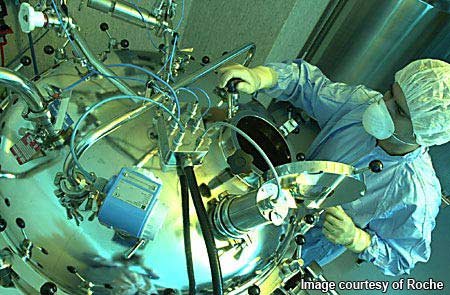The Penridge Suite, 470 Bowes Road, London N11 1NL: 1st April 2011
The role of the analytical developer has always been challenging but, in recent years, with the advent of ever-higher expectations, more complex products, regulatory authority and corporate driven innovations there has been an increased need for improved techniques. There are, of course, many ways to tackle some, if not all of these issues, with many solutions such as multimodal and multipurpose technologies arising in the last few years. This meeting will cover these newer procedures and innovations that are being developed and introduced to analytical development and will evaluate their applicability and potential impact to the pharmaceutical and biotechnology industry.
This event has CPD accreditation and will have a troubleshooting panel session.
On registration you will be able to submit your questions to the panel that will be asked by the chair on the day of the event
Meeting chair - Dr Andrew Thomson, QC and Analytical Development Consultancy .
9:00 – 9:45 Registration
9:45 – 10:00 Morning Session - Introduction by the Chair: Dr Andrew Thomson, QC and Analytical Development Consultancy
10:00 – 10:30 Tm and beyond! – combining equilibrium and kinetic stability data to add a new dimension to high throughput formulation development’
Dr Simon Webster, Avacta Group plc
The equilibrium thermal transition temperature, Tm, of a protein is a widely used metric of protein physical ‘stability’ in the screening of candidate proteins and formulations. This value may rapidly be obtained from many samples whilst consuming very little protein sample using recently available instrumentation. However, the ‘equilibrium’ Tm represents only part of the physical stability story, and the kinetic (time dependant) behaviour of both unfolding and aggregation may provide additional valuable insights to guide candidate selection and formulation development. This is discussed and example data is presented.
10:30 – 11:00 Automated Measurement of Protein Conformation in Solution using the ChirascanTM-plus ACD
Dr David Gregson, CEO, Applied Photophysics
A stable, native conformation is essential to the correct functioning of a protein; an incorrectly folded protein will be at best inactive and may be toxic. Applied Photophysics’ ChirascanTM–plus ACD is an advanced circular dichroism spectrometer for the automated measurement of protein conformation in solution. Samples are presented in 96-well plate format and transferred to the spectrometer sequentially using a fixed-probe robot. Measuring samples under different conditions (e.g. pH, ionic strength or ligand binding) readily identifies regions of conformational stability. The unattended operation offered by the ChirascanTM-plus ACD significantly improves the productivity of CD, enhancing its usefulness in formulation and pre-formulation studies.
11:00- 11:05 Speakers photo
11:05 – 11:30 Mid-morning break
11:30 – 12:00 TBC
Dr Gavin O’Connor, LGC, UK
12:00 – 12:30 Characterising drug delivery particles: from virus and bacteriophage to liposomes, SLNs and protein aggregates - how NanoSight is helping further understanding
Dr Patrick Hole, Nanosight, UK
NanoSight is a technique for sizing and counting nanoparticles in their native suspension. This may be for couting virus/VLP/phage, assessing early onset of protein aggregation or studying novel drug delivery nanoparticles. This talk will describe the NanoSight technique and contrast to the alternative techniques (DLS, SEM, plaque assay etc.) commercially available. Discussion will also be given to the additional speciation information that can be gained by the fluorescence add-on to the system.The NanoSight technique is rapid gives high resolution data and the systems (of which there are >300 installed worldwide) are cost effective and easy to use
12:30 –13:30 Lunch and Poster Viewing
13:30 – 14:30 Discussion panel session
Please submit questions to Euroscicon staff during the event. These questions will be asked to the panel of speakers at this panel session. Plus you are free to ask additional questions during the session
14:30 – 15:00 Large Molecular Weight Determination Methodologies
Steve Harding, Nottingham University
15:00 – 15;30 Afternoon Tea/Coffee and Last Poster Viewing
15:30- 16:00 Complexity built in; Biophysical case studies on biopharmaceuticals
Dr Clemens Stilling, Analytical Development, Biologicals, UCB.Celltech
Biopharmaceuticals are often large proteins, such as monoclonal antibodies. Antibodies and antibody fragments may be conjugated to other chemical moieties to control certain characteristics. Therefore the size and complexity of these compounds as well as other factors, such as formulations, can challenge standard biophysical analysis. This talk will explore characterization techniques and strategies to probe ensemble structures, protein stability and protein aggregation by techniques such as CD, DSC and DLS. Historically, one of the factors limiting the use of biophysical techniques is the relatively high requirements of sample amount and time. Novel methodologies aim to reduce these factors significantly.
16:00 – 16:30 Benchtop and in-line instrumentation for quantifying size and aggregation of biopharmaceuticals
Professor David Goodall, Paraytec¸UK
Key issues in developing formulations of therapeutic proteins relate to minimising aggregation and sub-visible particles. This presentation will discuss how such quality attributes can be measured in an automated fashion using Paraytec’s TDA200 System. The system uses high resolution ultra-violet imaging to size samples flowing through a capillary. Proteins can be characterised in the concentration range 0.1 – 150 mg/mL without the need for any pretreatment (e.g. filtration, centrifugation) and in the presence of surfactants. Examples will be given of applications to therapeutic proteins and antibodies, both off-line and in-line during semi-preparative size exclusion chromatography. The benchtop instrumentation also allows measurement of viscosity, electrophoretic mobility and protein charge.
16:30 – 17:00 Chairman’s summing up.
Sponsors
This meeting was organised by Euroscicon (www.euroscicon.com), a team of dedicated professionals working for the continuous improvement of technical knowledge transfer to all scientists. Euroscicon believe that they can make a positive difference to the quality of science by providing cutting edge information on new technological advancements to the scientific community. This is provided via our exceptional services to individual scientists, research institutions and industry. The event was hosted by ‘BioPark (www.biopark.co.uk), a research and development centre in Welwyn Garden City providing specialist facilities and support for bioscience and health technology businesses to grow, and to develop new products and technologies
Media Sponsors
About the chair
Andrew Thomson has worked in biopharmaceutical QC and Analytical Development for 15 years, most recently as a consultant for the last 6 years. He has worked, both in the UK and the USA for companies such as AstraZeneca, Seattle Genetics and PowderJect. This has given him experience in MAbs, Antibody Drug Conjugates, Polysaccharides and Transdermal Delivery systems. He gained his PhD from the University of Kent at Canterbury researching protein glycosylation in mammalian cell systems. Most recently as an extension to his consultancy work he has worked with bioProcessUK, establishing and facilitating the biopharmaceutical Formulation Special Interest Group
About the Speakers
Simon Webster is CSO and co-founder of Avacta Group plc based in York, UK. Simon’s scientific career has focused on the practical application of a wide range of optical analytical techniques to a wide range of tasks. Since 2004 the scientific focus has been on biophysical analysis of biopharmaceuticals, understanding protein physical stability and the development of innovative analytical instrumentation for biopharmaceutical developers. Simon’s current role involves providing scientific and technical support to Avacta’s existing contract analytical service and instrumentation business and leading the development of new, innovative products and services aimed at meeting the needs of the biopharmaceutical sector.
David Gregson is the Managing Director of Applied Photophysics Limited (APL), based in Leatherhead, Surrey, U.K. He studied chemistry at the University of Bristol and graduated in 1978; after a brief gap in industry, he studied for his PhD. at the Institut Laue-Langevin in Grenoble, France, moving back to the U.K. in 1988 to take up a post with the VG group of companies, eventually becoming Technical Director at VG Elemental in 1994. He joined APL in July 1996, where he has overseen the development and introduction of several new products, including the recently-introduced world-beating Chirascan circular dichroism spectrometer.
Patrick Hole is currently Head of Development at NanoSight and has been with the company five years. Previously he has completed a PhD in optoelectronics at the University of Southampton and a Masters Engineering degree at Oxford Universtiy. He has focussed on developing both the hardware and software involved in the Nanoparticle Tracking Analysis (NTA) technique, invented eight years ago, to be an easy to use, accurate and robust system.
David Goodall is CSO and founder of Paraytec Limited, based in York, UK. He is also Emeritus Professor of Chemistry at the University of York, where his speciality was in analytical science and instrumentation. He has been involved in a range of collaborative projects with industrial partners, most recently a TSB-supported project including companies in the biologics sector. Paraytec’s main customer focus is to provide early insights for those working in analytical and preformulations R&D and assessing developability of biopharmaceuticals and pharmaceuticals.
Connect with us on
Nature network - http://network.nature.com/groups/euroscicon/
- http://www.linkedin.com/groups?gid=1939569
- http://www.facebook.com/group.php?gid=70847076549
- http://twitter.com/Euroscicon/
Dont forget to sign up to Euroscicons’ e-newsletter at www.euroscicon.com/signup.htm to keep up to date with European Life Science news and events and to be notified of the follow up to this event
Meeting web site: www.regonline.co.uk/Methodologies2011
Post expires at 9:03am on Friday April 1st, 2011






















